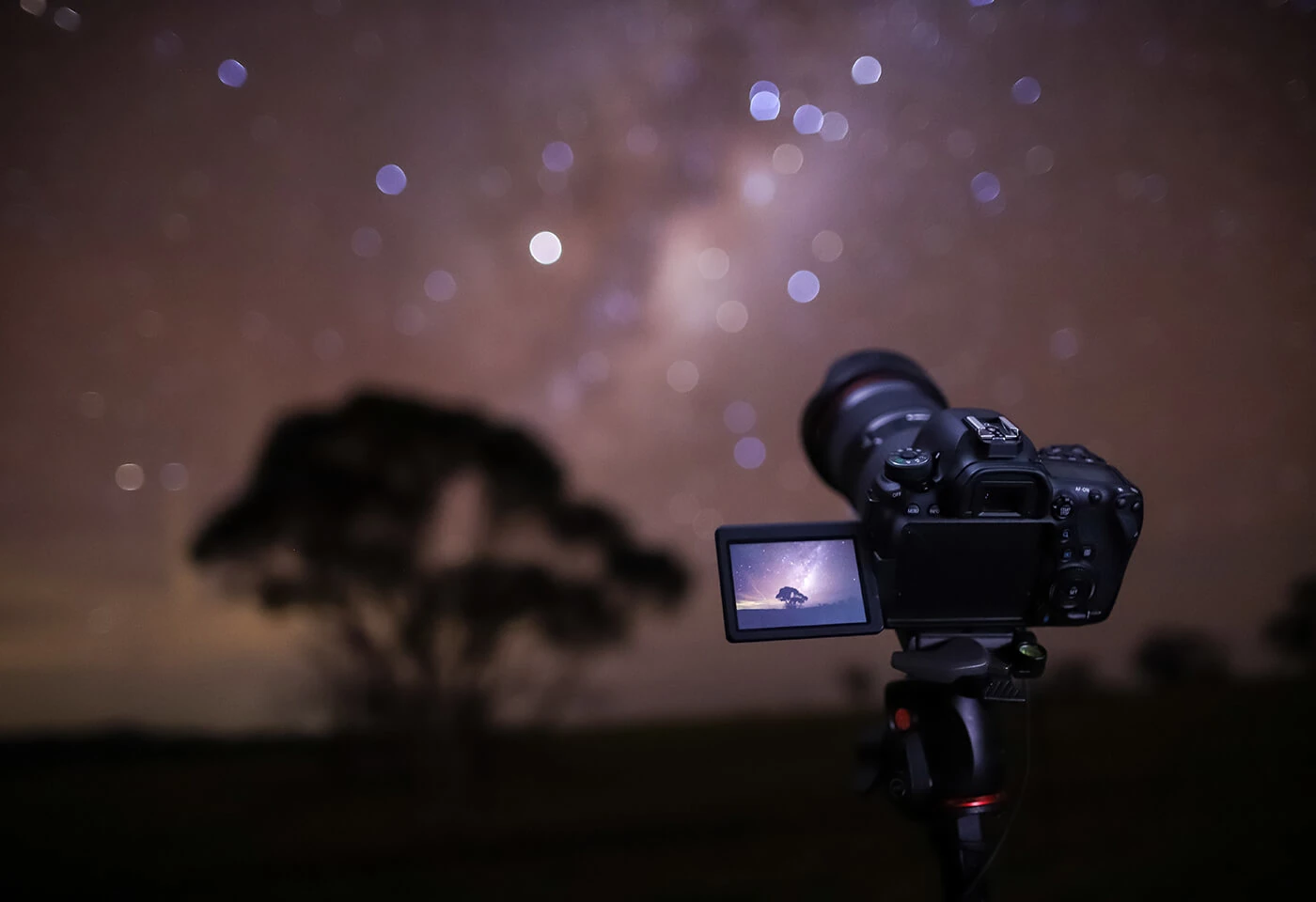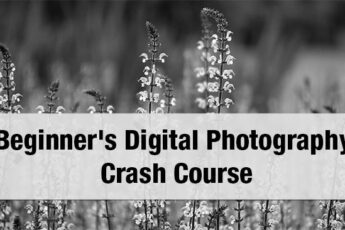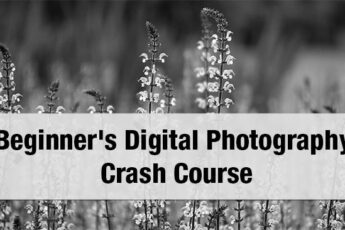Low-light photography is a captivating and challenging genre that pushes the boundaries of both the photographer’s skills and the camera’s capabilities. As the sun sets and the world is enveloped in darkness, a whole new realm of photographic possibilities emerges. From the twinkling city lights to the ethereal glow of the moon, low-light scenes offer a unique opportunity to capture the beauty and mystery of the world around us.
However, capturing stunning images in low-light conditions requires more than just a keen eye and creative vision. It also demands a camera that can perform exceptionally well in challenging lighting situations. In this comprehensive guide, we will explore the top cameras for low-light photography, delving into their features, performance, and overall value. Whether you’re a professional photographer or an enthusiastic hobbyist, this article will help you make an informed decision when choosing the perfect camera for your low-light adventures.
- Overview of Low-Light Photography
- Importance of Choosing the Right Camera
- Top Cameras for Low-Light Photography
- Nikon Z7 II
- Features
- Performance
- Nikon D850
- Features
- Performance
- Canon EOS R6 Mark II
- Features
- Performance
- Fujifilm X-T4
- Features
- Performance
- Panasonic LUMIX S5 II
- Features
- Performance
- PENTAX K-3 Mark III
- Features
- Performance
- Comparison of Top Cameras
- Sensor Type and Size
- ISO Performance
- Autofocus System
- Price and Value
- Tips for Low-Light Photography
- Adjusting ISO Settings
- Using Slow Shutter Speeds
- Optimizing Aperture
- Minimizing Camera Shake
- Utilizing Additional Light Sources
- Lens Selection
- White Balance Adjustment
- Black and White Photography Techniques
- Conclusion
Overview of Low-Light Photography
Low-light photography encompasses a wide range of scenarios, from dimly lit interiors to nighttime cityscapes and starry skies. In these situations, the camera must be able to capture as much light as possible while minimizing noise and maintaining sharpness. The challenges of low-light photography include dealing with slower shutter speeds, higher ISO settings, and the need for wide apertures to allow more light to reach the sensor.
Despite these challenges, low-light photography offers a wealth of creative possibilities. The interplay of light and shadow, the vibrant colors of neon signs, and the ethereal glow of moonlight all contribute to the unique atmosphere and mood of low-light images. Mastering low-light photography allows you to tell compelling stories, evoke emotions, and showcase the world in a different light.
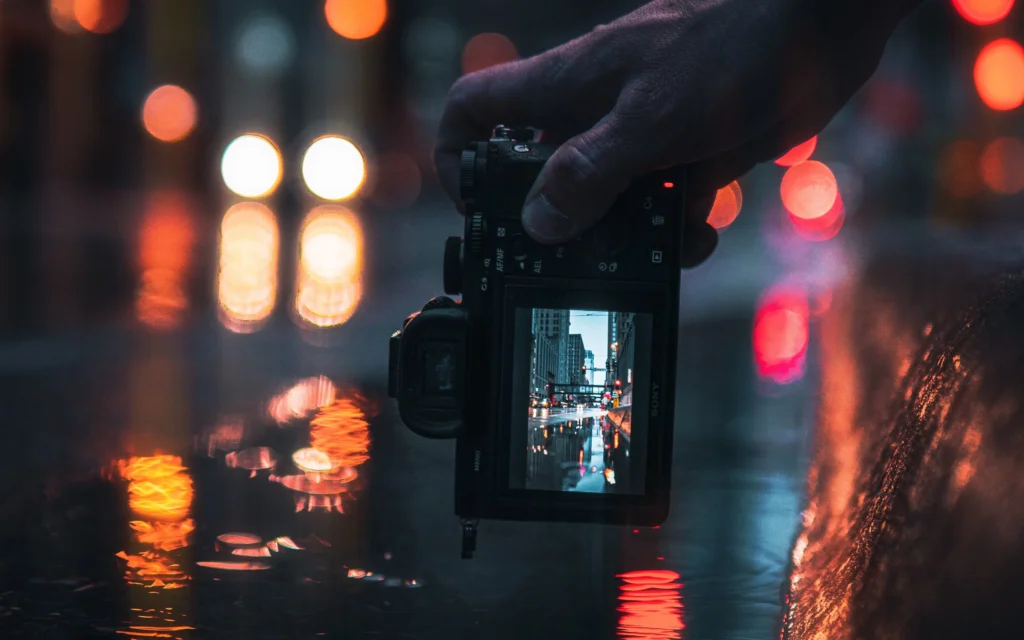
Importance of Choosing the Right Camera
Selecting the right camera is crucial for successful low-light photography. While technique and skill play a significant role, the camera’s capabilities can make or break your low-light images. A camera with excellent low-light performance will allow you to capture clean, detailed, and noise-free images even in challenging lighting conditions.
When evaluating a camera for low-light photography, several key factors come into play. The sensor size and type, ISO performance, autofocus system, and lens compatibility all contribute to a camera’s low-light capabilities. Full-frame sensors, for example, generally offer better low-light performance due to their larger size and ability to gather more light. High ISO performance is essential for maintaining image quality when shooting in low-light situations, while a reliable autofocus system ensures that your subjects remain sharp and in focus.
Investing in a camera that excels in low-light photography can open up new creative avenues and allow you to capture images that were previously out of reach. Whether you’re shooting intimate portraits, atmospheric landscapes, or vibrant city scenes, having the right camera by your side can make all the difference.
Top Cameras for Low-Light Photography
Nikon Z7 II
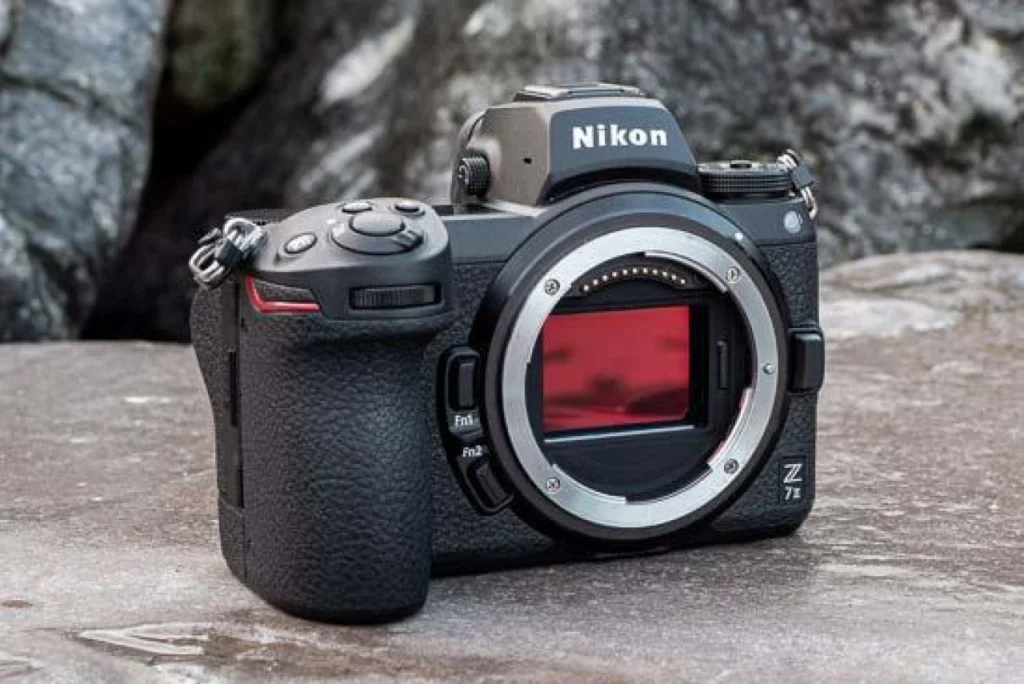
Features
The Nikon Z7 II is a full-frame mirrorless camera that boasts impressive low-light capabilities. With a 45.7-megapixel backside-illuminated (BSI) CMOS sensor, the Z7 II delivers exceptional image quality and detail, even in challenging lighting conditions. The camera features an ISO range of 64-25,600, expandable to 102,400, allowing you to capture clean and noise-free images in low light.
The Z7 II also features a fast and accurate autofocus system, with 493 phase-detection AF points covering 90% of the frame. This ensures that your subjects remain sharp and in focus, even in dimly lit environments. The camera’s 5-axis in-body image stabilization (IBIS) system provides up to 5 stops of compensation, helping to minimize camera shake and blur when shooting handheld in low light.
Performance
In practice, the Nikon Z7 II delivers outstanding low-light performance. The camera’s high-resolution sensor captures an incredible amount of detail, while the advanced noise reduction algorithms keep noise levels low even at high ISO settings. The autofocus system is fast and reliable, allowing you to capture sharp images of moving subjects in low light.
The Z7 II’s IBIS system is particularly useful for low-light photography, as it allows you to shoot at slower shutter speeds without introducing camera shake. This means you can keep your ISO settings lower, resulting in cleaner and more detailed images. The camera’s ergonomic design and customizable controls also make it a pleasure to use in low-light situations, allowing you to adjust settings quickly and easily.
Nikon D850
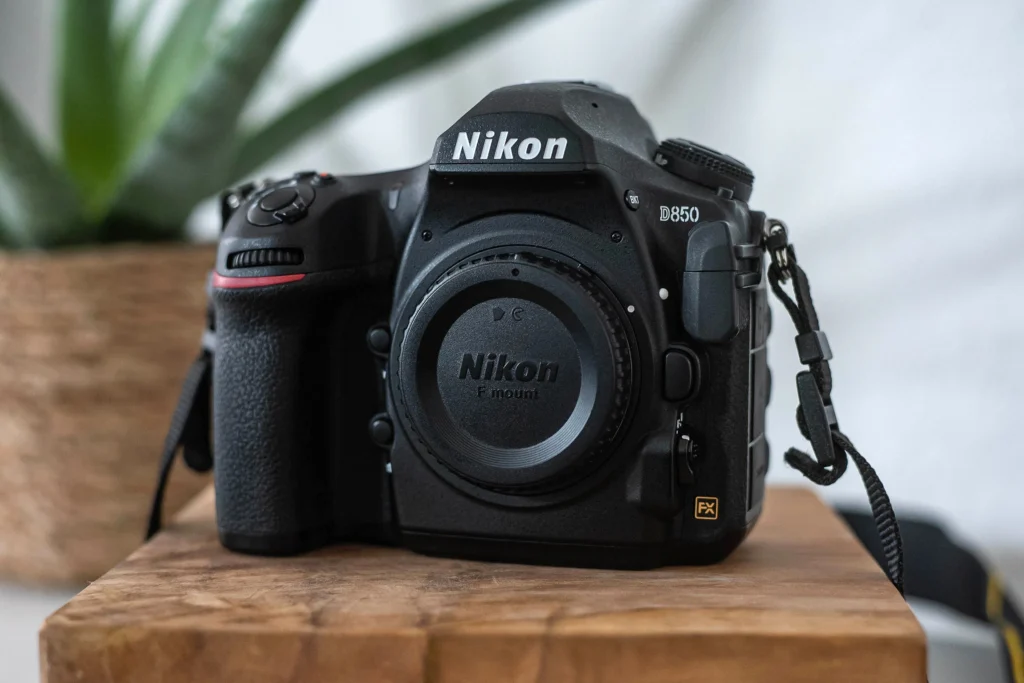
Features
The Nikon D850 is a professional-grade DSLR camera that excels in low-light photography. With a 45.7-megapixel full-frame sensor, the D850 delivers exceptional image quality and detail, even in challenging lighting conditions. The camera features an ISO range of 64-25,600, expandable to 102,400, allowing you to capture clean and noise-free images in low light.
The D850 also features a fast and accurate autofocus system, with 153 focus points, including 99 cross-type sensors. This ensures that your subjects remain sharp and in focus, even in dimly lit environments. The camera’s advanced metering system helps to accurately expose your images, even in tricky lighting situations.
Performance
In the field, the Nikon D850 proves to be a reliable and capable low-light performer. The camera’s high-resolution sensor captures an incredible amount of detail, while the advanced noise reduction algorithms keep noise levels low even at high ISO settings. The autofocus system is fast and accurate, allowing you to capture sharp images of moving subjects in low light.
The D850’s advanced metering system is particularly useful for low-light photography, as it helps to ensure thatyour images are properly exposed, even in challenging lighting conditions. The camera’s robust build quality and weather sealing also make it a reliable choice for low-light photography in various environments, from dimly lit interiors to outdoor night scenes.
Canon EOS R6 Mark II
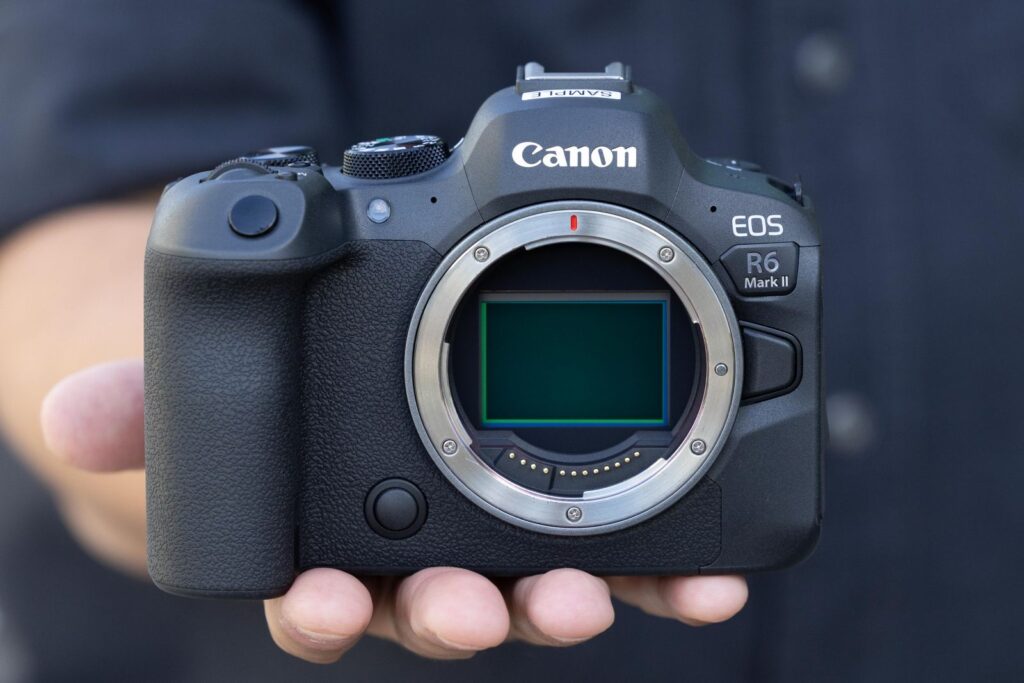
Features
The Canon EOS R6 Mark II is a full-frame mirrorless camera that offers impressive low-light capabilities. With a 24.2-megapixel CMOS sensor, the R6 Mark II delivers excellent image quality and detail, even in challenging lighting conditions. The camera features an ISO range of 100-102,400, expandable to 204,800, allowing you to capture clean and noise-free images in low light.
The R6 Mark II also features Canon’s advanced Dual Pixel CMOS AF II system, with 1,053 AF points covering approximately 100% of the frame. This ensures fast and accurate autofocus, even in dimly lit environments. The camera’s in-body image stabilization (IBIS) system provides up to 8 stops of compensation, helping to minimize camera shake and blur when shooting handheld in low light.
Performance
In real-world use, the Canon EOS R6 Mark II delivers impressive low-light performance. The camera’s 24.2-megapixel sensor strikes a balance between resolution and low-light capability, capturing detailed images with minimal noise at high ISO settings. The Dual Pixel CMOS AF II system is fast and reliable, allowing you to capture sharp images of moving subjects in low light.
The R6 Mark II’s IBIS system is particularly effective for low-light photography, enabling you to shoot at slower shutter speeds without introducing camera shake. This allows you to keep your ISO settings lower, resulting in cleaner and more detailed images. The camera’s customizable controls and user-friendly interface also make it a pleasure to use in low-light situations.
Fujifilm X-T4
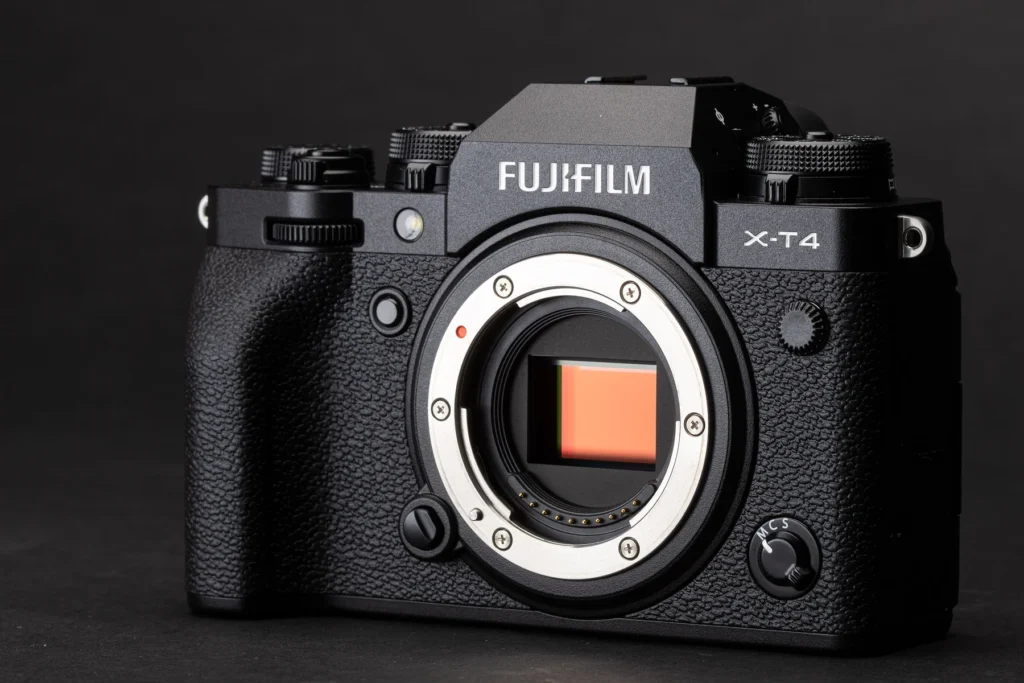
Features
The Fujifilm X-T4 is a versatile APS-C mirrorless camera that offers excellent low-light performance. With a 26.1-megapixel X-Trans CMOS 4 sensor, the X-T4 delivers sharp and detailed images, even in challenging lighting conditions. The camera features an ISO range of 160-12,800, expandable to 51,200, allowing you to capture clean and noise-free images in low light.
The X-T4 also features a fast and accurate autofocus system, with 425 phase-detection AF points covering the entire frame. This ensures that your subjects remain sharp and in focus, even in dimly lit environments. The camera’s 5-axis in-body image stabilization (IBIS) system provides up to 6.5 stops of compensation, helping to minimize camera shake and blur when shooting handheld in low light.
Performance
In practice, the Fujifilm X-T4 delivers impressive low-light performance for an APS-C camera. The X-Trans CMOS 4 sensor captures a high level of detail, while the advanced noise reduction algorithms keep noise levels low even at high ISO settings. The autofocus system is fast and reliable, allowing you to capture sharp images of moving subjects in low light.
The X-T4’s IBIS system is particularly useful for low-light photography, as it allows you to shoot at slower shutter speeds without introducing camera shake. This means you can keep your ISO settings lower, resulting in cleaner and more detailed images. The camera’s retro-inspired design and intuitive controls also make it a pleasure to use in low-light situations.
Panasonic LUMIX S5 II
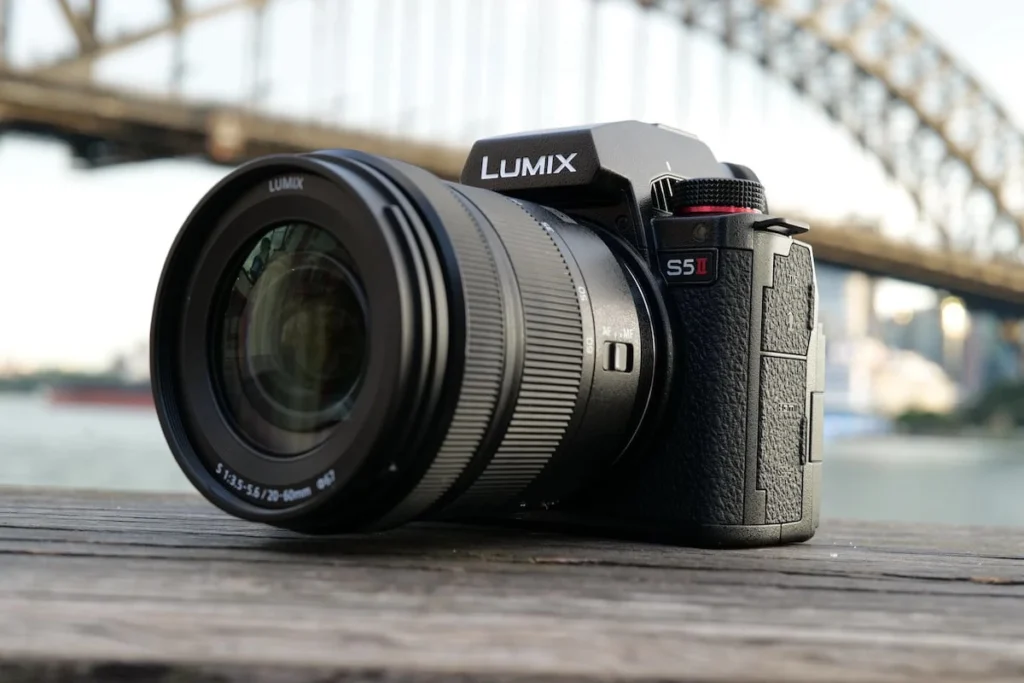
Features
The Panasonic LUMIX S5 II is a full-frame mirrorless camera that offers excellent low-light capabilities. With a 24.2-megapixel CMOS sensor, the S5 II delivers impressive image quality and detail, even in challenging lighting conditions. The camera features an ISO range of 100-51,200, expandable to 204,800, allowing you to capture clean and noise-free images in low light.
The S5 II also features a fast and accurate autofocus system, with 779 phase-detection AF points covering approximately 100% of the frame. This ensures that your subjects remain sharp and in focus, even in dimly lit environments. The camera’s 5-axis in-body image stabilization (IBIS) system provides up to 6.5 stops of compensation, helping to minimize camera shake and blur when shooting handheld in low light.
Performance
In real-world use, the Panasonic LUMIX S5 II delivers impressive low-light performance. The camera’s 24.2-megapixel sensor captures a high level of detail, while the advanced noise reduction algorithms keep noise levels low even at high ISO settings. The autofocus system is fast and reliable, allowing you to capture sharp images of moving subjects in low light.
The S5 II’s IBIS system is particularly effective for low-light photography, enabling you to shoot at slower shutter speeds without introducing camera shake. This allows you to keep your ISO settings lower, resulting in cleaner and more detailed images. The camera’s compact size and ergonomic design also make it a pleasure to use in low-light situations.
PENTAX K-3 Mark III
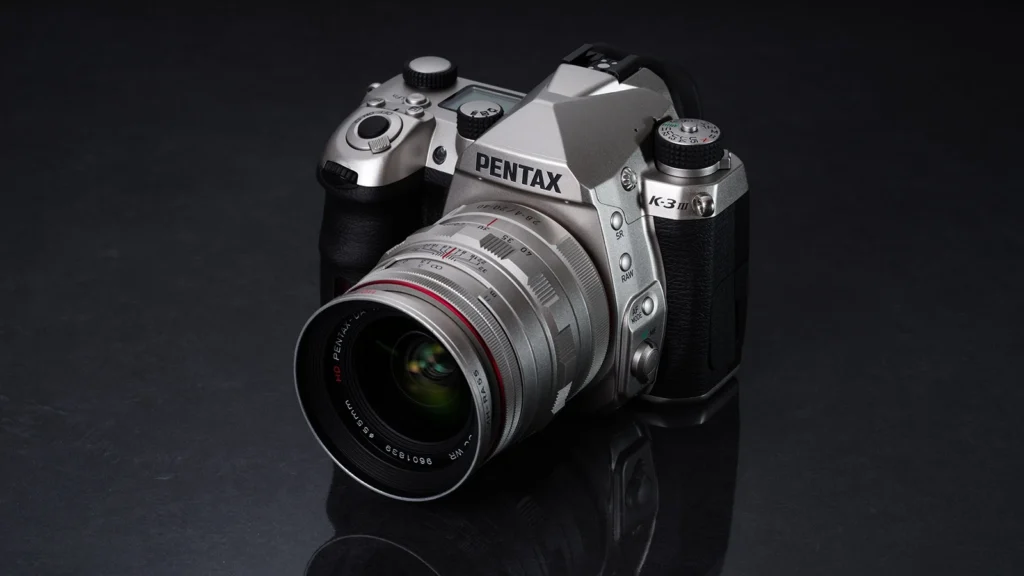
Features
The PENTAX K-3 Mark III is a high-performance APS-C DSLR camera that offers excellent low-light capabilities. With a 25.7-megapixel CMOS sensor, the K-3 Mark III delivers sharp and detailed images, even in challenging lighting conditions. The camera features an ISO range of 100-1,600,000, allowing you to capture clean and noise-free images in low light.
The K-3 Mark III also features a fast and accurate autofocus system, with101 focus points, including 25 cross-type sensors. This ensures that your subjects remain sharp and in focus, even in dimly lit environments. The camera’s in-body shake reduction (IBIS) system provides up to 5.5 stops of compensation, helping to minimize camera shake and blur when shooting handheld in low light.
Performance
In practice, the PENTAX K-3 Mark III delivers impressive low-light performance for an APS-C DSLR. The camera’s 25.7-megapixel sensor captures a high level of detail, while the advanced noise reduction algorithms keep noise levels low even at high ISO settings. The autofocus system is fast and reliable, allowing you to capture sharp images of moving subjects in low light.
The K-3 Mark III’s IBIS system is particularly useful for low-light photography, as it allows you to shoot at slower shutter speeds without introducing camera shake. This means you can keep your ISO settings lower, resulting in cleaner and more detailed images. The camera’s weather-sealed body and durable construction also make it a reliable choice for low-light photography in various environments.
Comparison of Top Cameras
Sensor Type and Size
When comparing the top cameras for low-light photography, it’s essential to consider the sensor type and size. Full-frame sensors, found in cameras like the Nikon Z7 II, Nikon D850, Canon EOS R6 Mark II, and Panasonic LUMIX S5 II, generally offer better low-light performance due to their larger size and ability to gather more light. APS-C sensors, found in cameras like the Fujifilm X-T4 and PENTAX K-3 Mark III, are smaller but still capable of delivering excellent low-light performance.
ISO Performance
ISO performance is another crucial factor in low-light photography. Cameras with higher native ISO ranges and better noise reduction algorithms will generally perform better in low-light situations. The Nikon Z7 II, Nikon D850, and Canon EOS R6 Mark II offer excellent high ISO performance, with expandable ISO ranges up to 102,400 or higher. The Fujifilm X-T4, Panasonic LUMIX S5 II, and PENTAX K-3 Mark III also offer impressive ISO performance for their respective sensor sizes.
Autofocus System
A fast and accurate autofocus system is essential for low-light photography, as it ensures that your subjects remain sharp and in focus, even in challenging lighting conditions. The Canon EOS R6 Mark II and Panasonic LUMIX S5 II feature advanced autofocus systems with a high number of AF points and excellent low-light performance. The Nikon Z7 II, Nikon D850, Fujifilm X-T4, and PENTAX K-3 Mark III also offer reliable autofocus systems that perform well in low light.
Price and Value
When choosing a camera for low-light photography, it’s important to consider the price and overall value. Full-frame cameras like the Nikon Z7 II, Nikon D850, Canon EOS R6 Mark II, and Panasonic LUMIX S5 II tend to be more expensive but offer superior low-light performance and features. APS-C cameras like the Fujifilm X-T4 and PENTAX K-3 Mark III are generally more affordable while still delivering excellent low-light capabilities.
Tips for Low-Light Photography
Adjusting ISO Settings
One of the most important settings for low-light photography is ISO. Higher ISO settings make the camera more sensitive to light, allowing you to capture brighter images in low-light situations. However, increasing the ISO also introduces more noise into the image. To find the right balance, start with a lower ISO and gradually increase it until you achieve the desired exposure. Be aware of your camera’s ISO performance and try to stay within its native ISO range for the best results.
Using Slow Shutter Speeds
Another way to capture more light in low-light situations is to use slower shutter speeds. This allows the camera’s sensor to gather light for a longer period, resulting in brighter images. However, slower shutter speeds also increase the risk of camera shake and motion blur. To minimize these issues, use a tripod or stabilize your camera on a solid surface. If shooting handheld, use your camera’s image stabilization system and practice proper handholding techniques.
Optimizing Aperture
Aperture plays a crucial role in low-light photography, as it determines the amount of light that reaches the camera’s sensor. Wide apertures (lower f-numbers) allow more light to enter the camera, making them ideal for low-light situations. However, wider apertures also result in a shallower depth of field, which can be a creative choice or a challenge depending on your subject. Experiment with different aperture settings to find the right balance between light gathering and depth of field for your specific situation.
Minimizing Camera Shake
Camera shake is a common issue in low-light photography, as slower shutter speeds increase the risk of blur caused by camera movement. To minimize camera shake, use a tripod whenever possible. If shooting handheld, use your camera’s image stabilization system and practice proper handholding techniques, such as bracing your elbows against your body and gently squeezing the shutter button. When using a tripod, consider using a remote shutter release or your camera’s self-timer to avoid introducing vibrations when pressing the shutter button.
Utilizing Additional Light Sources
In some low-light situations, you may need to utilize additional light sources to properly expose your images. This can include natural light sources, such as street lights or moonlight, or artificial light sources, such as flashlights or LED panels. When using artificial light sources, consider the color temperature of the light and how it will affect the overall mood of your image. You can also use reflectors to bounce light onto your subject, helping to fill in shadows and create a more balanced exposure.
Lens Selection
The choice of lens can greatly impact your low-light photography results. Fast lenses with wide maximum apertures (f/1.4, f/1.8, or f/2.8) are ideal for low-light situations, as they allow more light to reach the camera’s sensor. Prime lenses, which have a fixed focal length, often have wider maximum apertures than zoom lenses, making them a popular choice for low-light photography. However, high-quality zoom lenses with wide apertures can also be effective, offering more flexibility in composition.
White Balance Adjustment
In low-light situations, the color temperature of the available light can vary greatly, from the warm tones of candlelight to the cool hues of moonlight. To ensure accurate color reproduction, it’s essential to adjust your camera’s white balance settings accordingly. Most cameras offer automatic white balance, which can be effective in many situations. However, for more control, consider using your camera’s manual white balance settings or capturing images in RAW format, which allows for more flexibility in post-processing.
Black and White Photography Techniques
Converting low-light images to black and white can be an effective way to emphasize mood, contrast, and texture while minimizing the impact of noise and color casts. When shooting for black and white conversion, focus on capturing a wide range of tones, from deep shadows to bright highlights. In post-processing, adjust the contrast, brightness, and clarity settings to enhance the overall impact of the image. Consider using color filters or selective color adjustments to further refine the tonal range and create a more dramatic effect.
Conclusion
Low-light photography is a challenging but rewarding genre that allows photographers to capture unique and atmospheric images. By choosing the right camera and mastering low-light photography techniques, you can create stunning images that showcase the beauty and mystery of the world after dark.
When selecting a camera for low-light photography, consider factors such as sensor size, ISO performance, autofocus system, and overall value. Full-frame cameras like the Nikon Z7 II, Nikon D850, Canon EOS R6 Mark II, and Panasonic LUMIX S5 II offer superior low-light performance, while APS-C cameras like the Fujifilm X-T4 and PENTAX K-3 Mark III provide excellent value and capabilities.
To master low-light photography, practice techniques such as adjusting ISO settings, using slow shutter speeds, optimizing aperture, minimizing camera shake, and utilizing additional light sources. Experiment with different lenses, white balance settings, and black and white conversion techniques to further refine your low-light images.
Remember, low-light photography is an art form that requires patience, practice, and creativity. By investing in the right equipment and continuously honing your skills, you can create breathtaking images that capture the unique beauty and atmosphere of the world after dark.

